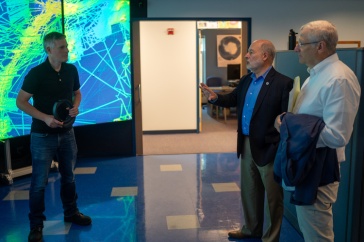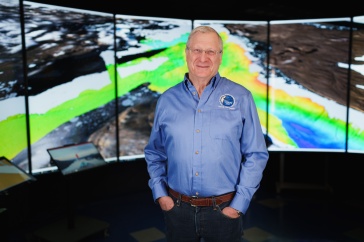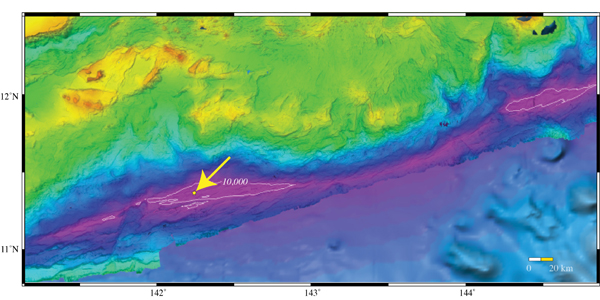
that identifies the location of the deepest sounding in the trench (10,994 meters). White contours
are 10,000-meter isobath.
An ocean mapping expedition has shed new light on the deepest place on Earth, the 2,500-kilometer long Mariana Trench in the western Pacific Ocean near Guam. Using a multibeam echo sounder, state-of-the-art equipment for mapping the ocean floor, scientists from the University of New Hampshire Center for Coastal and Ocean Mapping/Joint Hydrographic Center found four “bridges” spanning the trench and measured its deepest point with greater precision than ever before.
Research professor James Gardner and affiliate professor Andrew Armstrong, both of UNH’s Center for Coastal and Ocean Mapping/UNH-NOAA Joint Hydrographic Center (CCOM/JHC), presented their findings at the recent American Geophysical Union meeting in San Francisco, the world’s largest annual meeting of Earth and planetary scientists.
Mapping the entire Mariana Trench—approximately 400,000 square kilometers—from August through October 2010, the researchers discovered four bridges spanning the trench and rising as high as 2,500 meters above its floor. While satellite images had suggested the trench might be spanned by one such ridge, Gardner says the mapping mission confirmed the existence of four such features. “That got me excited,” he says.
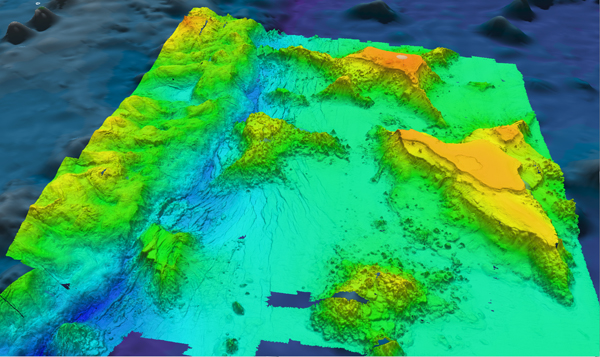
The ridges are being formed as the 180-million-year-old Pacific and far younger Philippine tectonic plates collide. Because the ocean’s crust cools as it ages, “the Pacific crust is much, much older, so it’s diving underneath the Philippine plate,” Gardner says. As seamounts on the Pacific plate are pulled beneath the Philippine plate, they are compacted against the wall of the trench, forming these ridges.
“It’s incredibly complex geology. These seamounts haven’t been completely subducted, they’re getting jammed up against the plate,” Gardner says. He surmises that the bridges are related to earthquake subduction zones, such as the one that caused the March 2011 earthquake in Japan.
The expedition also yielded the most precise measurement yet of Challenger Deep, the trench’s (and the Earth’s) deepest point, finding it to be 10,994 meters deep, plus or minus 40 meters. Calculated from thousands of depth soundings as well as detailed analysis of how the how the water column can alter the echo sounding signals, the new measurement is similar to other claims of the Challenger Deep’s depth, some of which are deeper.
“When you’re dealing with something that’s 11 kilometers deep, you have to deal with inherent uncertainties in the system,” says Gardner, noting that Challenger Deep is deeper than Mount Everest is high.
Multibeam echo sounders measure depth by sending sound energy to the ocean floor then analyzing the returning signal. Mounted beneath a ship, the instruments produce a fan-shaped swath of coverage of the seafloor. The resolution of the resulting images, at one pixel to every 100 meters, is far more precise than other earlier measurement systems. Hydrographers and ocean mappers such as Armstrong and Gardner describe the process of mapping an area as like “mowing the lawn,” making overlapping tracks over the area in question.
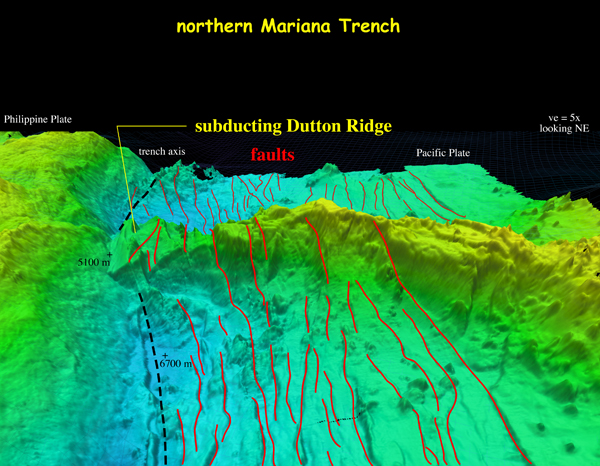
This mission to the Mariana Trench, the third and fourth cruises to that area by UNH scientists, was undertaken to gather data that can be used to support an extended continental shelf (ECS) under Article 76 of the United Nations Convention of the Law of the Sea (UNCLOS). All data are publicly available on the CCOM website: www.ccom.unh.edu.
The U.S. has an inherent interest in knowing, and declaring to others, the exact extent of its sovereign rights in the ocean as set forth in the Convention on the Law of the Sea. For the ECS, this includes sovereign rights over natural resources on and under the seabed including energy resources such as: oil and natural gas and gas hydrates; “sedentary” creatures such as clams, crabs, and corals; and mineral resources such as manganese nodules, ferromanganese crusts, and polymetallic sulfides.
The U.S. Extended Continental Shelf Task Force is responsible for delineating the U.S. ECS and is chaired by the Department of State with co-vice chairs from the National Oceanic and Atmospheric Administration and the Department of the Interior. Ten additional agencies participate in the task force, including the U.S. Geological Survey, Joint Chiefs of Staff, U.S. Navy, U.S. Coast Guard, Department of Energy, National Science Foundation, Environmental Protection Agency, Bureau of Ocean Energy Management, the Arctic Research Commission, and the Executive Office of the President.
Photos by University of New Hampshire Center for Coastal and Ocean Mapping/Joint Hydrographic Center
-
Written By:
Beth Potier | UNH Marketing | beth.potier@unh.edu | 2-1566














































